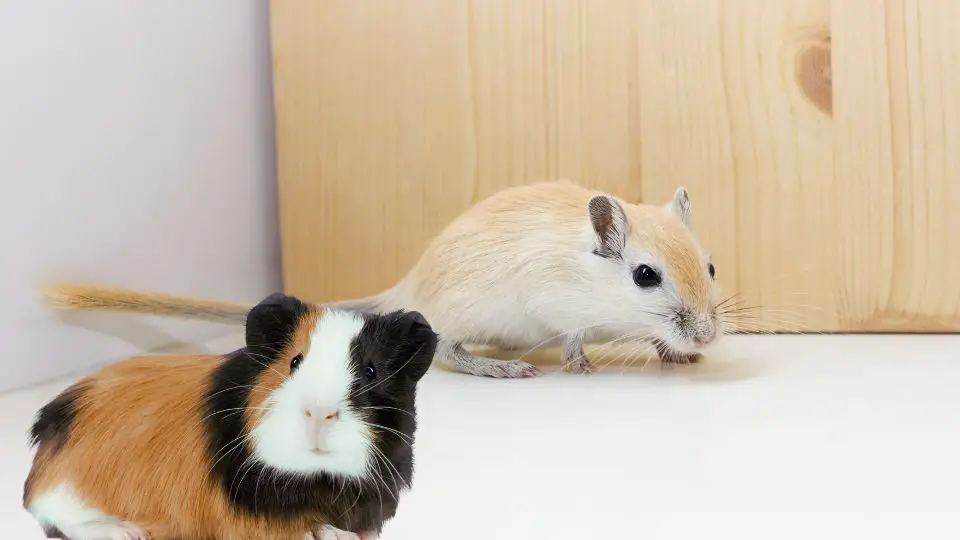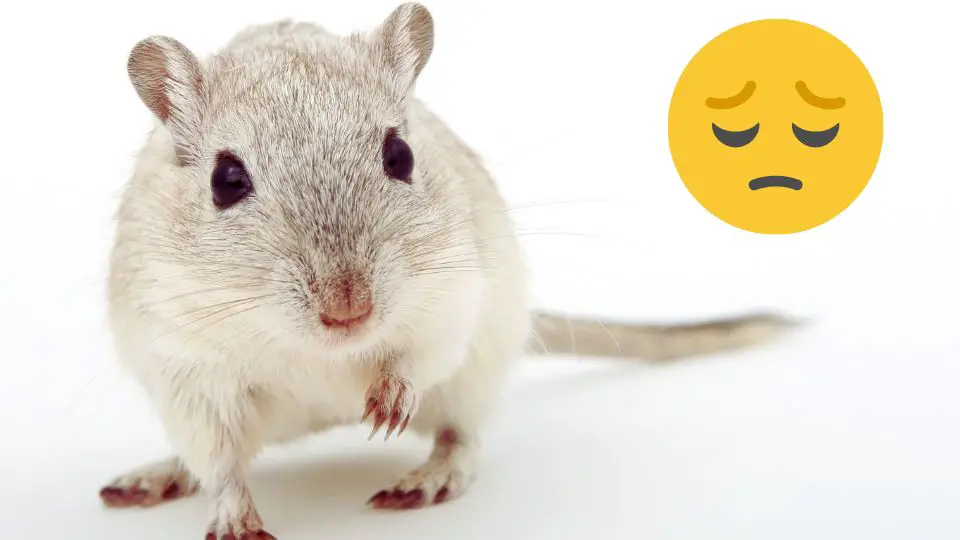Gerbils are small rodents that belong to the family Gerbillinae. Gerbils come in many different types, each with its own unique personality and characteristics. There are over 80 species of gerbils, primarily native from Africa, Asia and India.
They are commonly kept in homes as pets, and they make great house pets because they are easy to care for and there is a wide variety of activities that they can do. Here are five of the most common types:
- Mongolian Gerbils
- Fat-tailed Gerbils
- Pallid Gerbils
- Great Gerbils
- Shaw’s Jirds
The most common breed of gerbil that is sold as pet is the Mongolian gerbil. The last 3 in the last may make great pets but are only found in their native lands. Let’s take a look at every type of gerbil listed.
Mongolian gerbil
The Mongolian gerbil is the most common type of gerbil you will find in pet shops. They are very typical in their overall appearance, with large, black eyes and a medium sized hair coat with a long, thin tail. Mongolian gerbils are very active and playful, making them great pets for people who want an active companion.
The Mongolian gerbil is native from the Steppe region of Mongolia and can come in black, burmese, light red fox, ivory cream, polar fox, dove, sapphire, lilac and saffron.
Mongolian gerbils are often kept in medium to large-sized enclosures since they prefer to live in pairs or larger groups. These rodents are intelligent and social animals and make good pets, though they do require a lot of attention. Mongolian gerbils are active and playful and make good pets for people who like to have active animals.
They are known for their quirky personalities, non-aggressive nature, and curiousity. When treated with love, however, gerbils can be a great addition to any home. If it’s treated with care, the Mongolian gerbil can live between 3 and 5 years.
Fat-tailed Gerbils
Fat-tailed gerbils are a species that is only common to find as a pet outside of their native lands. They have recently gained popularity in pet stores across North America and Europe, and are becoming increasingly more common. Fat-tailed gerbils are small gerbils that weigh between 1.4 and 4.2 ounces (40 – 120 grams), with a tail that can be up to 2 inches long. They are playful, active creatures that make great pets for those who enjoy an active lifestyle.
Fat-tailed gerbils are native from North Africa and can live between 5 and 7 years. They are unique since they use their tail to store fats and water inside. If the gerbils is healthy and happy, the tail has nice, rounded form. This is a good indicator to check your fat-tailed gerbils regularly for any signs of illness.
Fat-tailed gerbils make an interesting pet to keep because they are social, but they can also be quite happy living alone. They are playful and intelligent creatures that make excellent pets for people who want a little bit of both companionship and independence.
Pallid Gerbils
The Pallid gerbil is a small desert creature that comes from Egypt. It is smaller than the Mongolian gerbil and its tail is longer than its body. The pallid gerbil has pale orange fur with white underparts, forelimbs and feet, and white around the eyes. This gerbil is shy and prefers to live in burrows rather than on the surface.
These animals are not usually kept as pets except occasionally in their native countries. They can live up to 5 years old. They are excellent climbers, and can be kept in almost any type of enclosure.
Great Gerbils
The Great gerbil is not kept as a pet anywhere in the world due to their aggressive behavior and voracious appetites. The great gerbil is a rodent that is native to the deserts of Central Asia. It is the largest member of the Gerbil family and is more rat-like in appearance than the typical Mongolian gerbil, which has a cute mouse-like appearance. The great gerbil grows to be about 15 – 20 cm long and has a shorter, but bushy tail.
There is a rumor among the science community that great gerbils were responsible for the Black Death and not rats, as many thought at the time. The great gerbil was a common in Europe during the Middle Ages, and some believe that they may have spread the plague to humans. No one knows for sure, but it’s an interesting theory nonetheless.
Shaw’s Jirds
Although not as commonly available as the other gerbils, Shaw’s Jird is a common rodent in many North African countries. It is slightly bigger than the others and has a longer tail. It is also the least common of the gerbils generally available as pets.
They are also the least sociable type in this list. Females are usual very aggressive and territorial, so if you get this type of gerbil as a pet, is a good idea to not keep a pair of females together.
Shaw’s Jirds are very docile towards humans and they like to be handled. They rarely bite and they can become tamer than any other gerbil once they gain trust in their owner.
Related questions
What is the friendliest gerbil?
The friendliest gerbil towards humans is Shaw’s Jirds, but since they are not common pets in most countries, we have to go with the Mongolian gerbil. Mongolian gerbils are one of the most popular pet animals in the world. They are sociable, inquisitive animals that are easy to feed and keep clean. These gerbils make excellent pets because they have a friendly temperament and are easy to care for.
What is the biggest gerbil?
The biggest gerbil is the great gerbil, which can grow up to 15 – 20cm (5.9 – 7.9 inches) long. The smallest gerbil is probably the Pouched gerbil which can grow just between 4 – 8cm (1.5 – 3.1 inches) long.
What is a black gerbil?
The black gerbil is a coloration of the Mongolian gerbil that was developed in domestic gerbils. The black gerbil behaves just like other Mongolian gerbils and there is no evidence to suggest that the black coloring is beneficial in any way, so they are prone to the same health problems.







